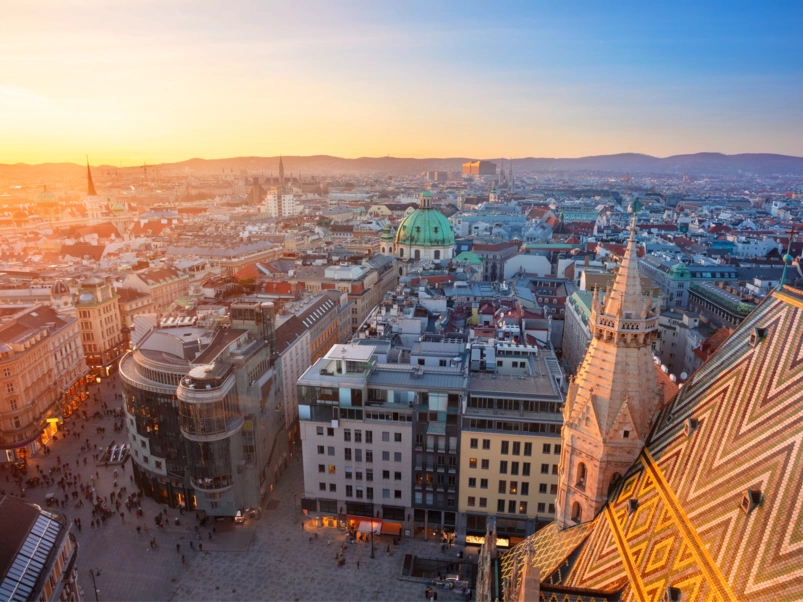
Neugierig
An eye that looks attentively into the distance. It perceives all movements, it is concentrated, it observes the entire environment. It turns in all directions and looks down on Stephansplatz.
The challenge for the artist lay in directing the natural structure of the wood into new directions in such a way that the object awakens to new life like a sensory organ. The sculpture projects vertically upward and was made from a solid piece of squared ash wood. The body is rough but regularly carved. From it protrudes a piece that is bent from the vertical to the horizontal axis. This changes the dynamics, the shape now goes into the width and distance. This impression is supported by a completely contrasting surface texture. The rounded part is now carefully polished and treated with shellac. This gives it not only the shape, but also the moist, shiny surface of an eye. One would touch the body, but not such a fragile and intimate sense organ as the eye. The eye is in tension, it does not observe inertly. The eye is alert and filled with curiosity.


_261_1_0cb303bed19a0b82163e05b87fd543a7.jpg)
_268_1_19edf2eaa2aea87e4fc80da5ac9ba8e5.jpg)